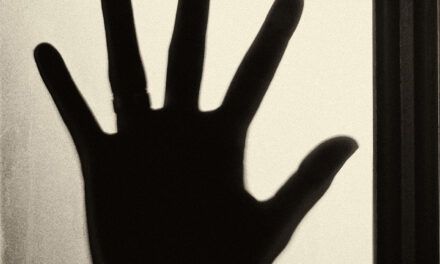
JUSTICE PERSPECTIVE
By Bob Chrismas
How a Truck Stop Waitress Solved a Serial Murder Case in Canada
 September 30, 2021, is Canada’s first National Day of Truth and Reconciliation, a newly instituted national holiday. It comes on the heels of the discovery this year of thousands of unmarked Indigenous children’s graves across the country. They are on the grounds of the residential schools, the colonial government’s major failed attempt to assimilate Indigenous people with the relatively new settler society. The first school opened in 1831 and the last one was closed in 1996.
September 30, 2021, is Canada’s first National Day of Truth and Reconciliation, a newly instituted national holiday. It comes on the heels of the discovery this year of thousands of unmarked Indigenous children’s graves across the country. They are on the grounds of the residential schools, the colonial government’s major failed attempt to assimilate Indigenous people with the relatively new settler society. The first school opened in 1831 and the last one was closed in 1996.
Indigenous children were forcefully adopted into white families from the 1960s on. It was called the “60’s baby scoop” and tore apart thousands of Indigenous families. This is another dark chapter that has added to the trauma of these communities that make of about four per cent of Canadian society. Yet, they make up over 70 per cent of the population of many of Canada’s prisons. High criminal involvement, medical and substance abuse and extremely high suicide rates are all symptoms of the trauma that carries forward across the generations.
Canada’s Truth and Reconciliation Commission documented the horror stories of the trauma that many Indigenous children experienced being taken from their families. An earlier Truth and Reconciliation Commission in South Africa provided a model on which Canada’s was later based. Yet, ironically, the townships that blacks were forced into during Apartheid in South Africa were based on the previously established Canadian reserve system.
In 2011, I had the opportunity to travel across South Africa, studying post-Apartheid reconciliation. I learned they still have a long way to go. The South African TRC found that people wanted acknowledgement of wrongs that were done more than anything else. Canada’s TRC seems to have confirmed a similar desire. Indigenous leaders have persisted that the official apology by Canada’s government in 2008 has not gone far enough. With unsettled treaty claims and the discovery of thousands of unmarked graves, the Indigenous community and all Canadians want answers. Canadians, indeed all North Americans, have a growing awareness of the injustices associated with colonization. We are all challenged to find ways to reconcile diverse worldviews and pain that still carries forward from the first days of European settlement.
In the mid-2000s, the Pickton serial murder case unfolded in British Columbia. Young women were being picked up in Vancouver and murdered. Numerous Indigenous women also went missing along the famed Highway 16 in British Columbia’s interior. Many were murdered.
It was ultimately named the highway of tears. The missing and murdered Indigenous women and girls’ movement began there. Still, it is a nationwide phenomenon that eventually was investigated by the next national inquiry by the same name.
Connections between serial murder cases and higher risk for some populations came to light. Primarily it was young Indigenous women, made vulnerable through poverty and family dynamics tied to the impacts of colonization. Many missing women were eventually suspected or confirmed dead. Many have been associated with being preyed on in the sex industry. For years in my policing career, I was heavily involved in investigating these cases. In policing and justice, we’ve strived for decades to prevent high-risk youth from becoming the next missing and murdered. Despite massive changes, raised awareness, and substantial money invested in counter-exploitation, women and girls continue to be targeted and hurt by the sex industry.
Therefore, I focused my doctoral research on possible solutions. I interviewed 61 people representing 1,000 years of collective experience. They were sex trafficking survivors, police, social workers, government and non-government agencies striving to help sex industry survivors. The stories are gut-wrenching, like the experiences I had working on counter-exploitation and missing person cases. I found that we have come a long way but still have a long way to go to keep some of our most vulnerable citizens safe.
My novel, The River of Tears (to be released in the fall of 2021 by DIO Press, New York), is one story based on my own experience and research. Through it, I provide insights into humanity and what many people go through in the trafficking world. It is a painful story, but it is also inspirational as people learn and grow. Dani (Cree for daughter) and detective Jack Bondar are adversaries at first. Dani is Indigenous. She distrusts the police and resents the marginalization of her people. Yet, she eventually has to call them to report her younger sister missing. Jack is jaded from too many years of police work. He has a racist view of Indigenous people whom he feels have consumed inordinate police services throughout his career. They eventually learn to understand each other’s perspectives and work together in the pursuit of Dani’s missing younger sister.
These individuals represent many people in Canada. They also represent the larger reconciliation that Canada must go through to move on from the past. By learning to work together, they achieve great things. So, it is also a story of inspiration and hope. Dani escapes a violent gang life to become a successful lawyer later in life. Jack begins to understand the Indigenous social dilemma.
A waitress at a truck stop breaks the case wide open by being astute to who is coming and going. She recognizes the girl on the poster that Dani put up and makes a call. That simple phone call kicks off a nationwide investigation that disrupts serial trafficking rings and murders across the country. There is a simple but profound lesson in this. Any convenience store clerk could change the world with a modest observation and a quick phone call. It doesn’t take anything heroic- as I depicted in the previous article on safe-havens. It could be as simple as writing down a license plate and passing the information on to the police. Just being willing to observe and report is all it takes.
In my novel, a body is found in the river in the first scene. Rivers have been commonplace for bodies to turn up in Canada. Like the highway of tears, the river metaphorically represents the river of despair that runs through the impoverished core of every city in North America. It is a story of the river of tears.
Bob Chrismas, Ph.D. is president of Bob Chrismas Consulting Inc. He draws on over 35 years of law enforcement experience, writing prolifically on justice issues. Visit Bob at: https://bchrismas.com


































